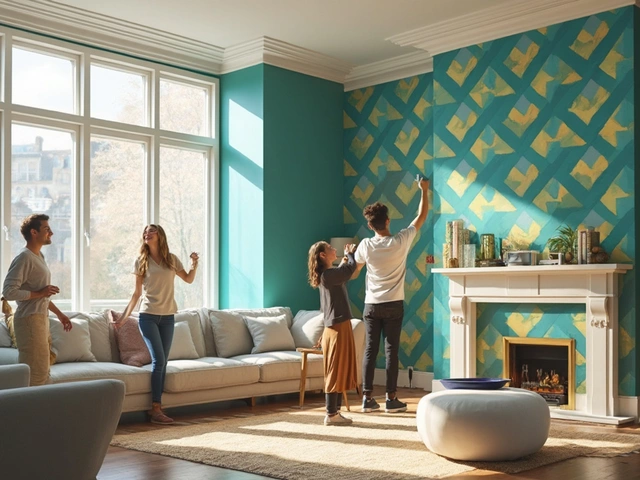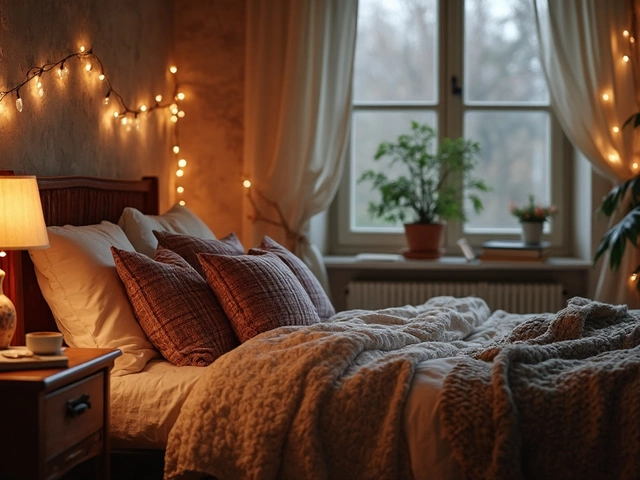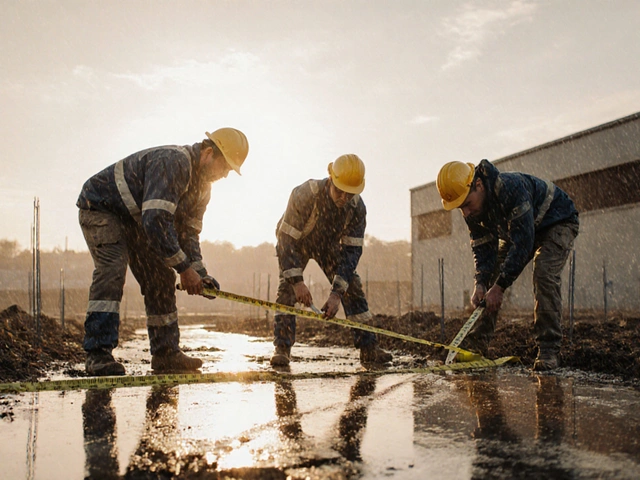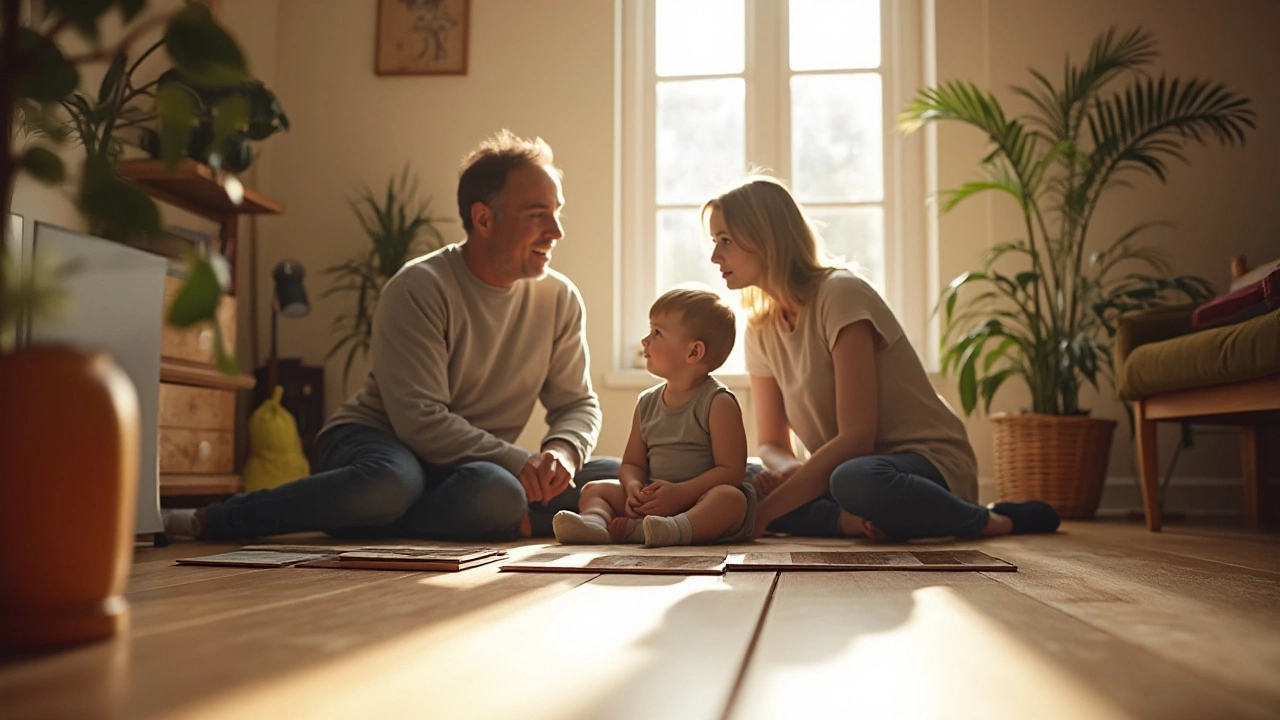
When it comes to flooring, you're faced with more choices than a lone kid in a candy store—they all got their sweet spots, yet not every selection suits your wallet the same way. You want something that looks great, lasts long, and doesn't sneak up on you with unexpected costs. Quite the pickle, right?
In this article, we’ll peel back the layers on some of the most common flooring options, including how they match up in both price and performance. We’ll help you scope out which types of floors are best suited to different areas of your home, factoring in how you and your family live day-to-day. From hardwood elegance to the resilience of vinyl, we’ll help navigate the highlights and hurdles of each.
Whether you're drawing up plans for a major renovation or just giving a room a quick refresh, understanding the balance between cost and quality is key. Sit tight, and let’s walk through some ground truths about flooring choices that'll keep your bank account smiling.
- Understanding Flooring Options
- Cost vs. Durability
- Lifestyle and Maintenance Considerations
- Room-Specific Recommendations
- Tips for Maximizing Value
Understanding Flooring Options
When considering new floors for your home, it’s crucial to navigate through the variety of flooring options available. Each material boasts its own unique set of attributes that cater to different aesthetics, budgets, and practical needs. The journey to selecting the ideal floor begins with understanding what each type offers, so let's dive in and explore your options. Hardwood floors are often at the forefront of people's minds. Known for their classic beauty and durability, hardwood can enhance a home’s value significantly. However, it comes with a higher initial price tag, and maintenance can be demanding, especially in moisture-prone areas.
On the flip side of the elegance coin, you have laminate flooring. This budget-friendly alternative mimics the look of real wood at a fraction of the cost. It’s a tough cookie, standing up to scratches and spills, making it a favored choice for active households. Nonetheless, it's worth mentioning that laminate might not age as gracefully as some other materials, showing signs of wear more quickly over decades. When considering the practicality of flooring, many homeowners turn to vinyl, particularly luxury vinyl planks. They offer impressive versatility and a staggering range of designs and patterns. Its waterproof nature makes it ideal for bathrooms and kitchens. A quote from Architectural Digest sums it up best, "For families and pet owners, vinyl plank is about combining resilience with style."
Carpet remains a staple in many homes, providing warmth and comfort underfoot. It’s available in a staggering array of colors and textures, allowing for creative freedom. That said, carpet can capture dust and allergens, demanding regular cleaning and replacement if not properly maintained. Choosing a carpet means balancing its plush comfort with upkeep efforts. Stone and tile are excellent for high-traffic areas, offering superior durability and easy maintenance. Their cool surface can be a refreshing touch in warmer climates. However, these options come with a higher installation cost and can be less forgiving on dropped items.
While exploring these flooring options, it’s beneficial to access some comparative figures. Take a look at an average cost comparison per square foot:
| Flooring Type | Cost per Sq Ft |
|---|---|
| Hardwood | $5 - $15 |
| Laminate | $2 - $7 |
| Vinyl | $2 - $8 |
| Carpet | $1 - $5 |
| Tile | $1 - $20 |
This table offers a glimpse into the financial factors that play into your decision. As we journey through the options, remember to balance initial investment against the lifespan and your personal comfort in everyday living. Choosing wisely could mean a difference that lasts many years to come, ensuring that your floors not only fit the budget but also enhance your home's charm and functionality.
Cost vs. Durability
Stepping into the realm of home improvement, the battle between cost and durability is perennial, especially when it comes to flooring. Scrutinizing flooring options involves understanding how initial expenses balance against the lifespan and resilience of different materials. Hardwood floors, for example, might come with a higher upfront cost, but they often boast a longevity that makes them a wise investment for those eyeing the long haul. With routine maintenance, such as refinishing every few years, hardwood can serve faithfully for decades, even increasing a home’s value down the line.
Contrast this with options like laminate or vinyl, which often draw homeowners with their budget-friendly price tags. While these alternatives excel at mimicking the look of pricier materials, their lifespan can vary, largely hinging on the quality and the room's specific demands. The high traffic areas of a house can significantly test the endurance of these surfaces. For families, especially, examining the wear and tear of a typical week can help decide whether a less costly option balances out if it needs replacing more frequently. Understanding the durability of chosen flooring options is crucial, as what may seem like a cost-effective deal can, over time, outpace the price of more resilient materials.
It's wise to consider not only day-to-day footfall but also potential exposure to elements like water and sunlight. For instance, rooms prone to spills or high humidity, such as kitchens or bathrooms, may benefit from tiles or specialized vinyl that can weather such conditions. With tiles, the durability is almost unmatched, often lasting as long as the home itself, but the cost can be significant, not just for materials but for installation as well.
In a survey by the National Wood Flooring Association, it was noted that homes with wood flooring often see a price increase upon resale. This statistic underscores the value offered by durable materials, particularly in a resale scenario. As one interior designer quipped, "Invest in your floors as you would your shoes—it's the foundation beneath everything." His words echo the sentiment that choosing wisely initially can mean less lax budgeting in the future due to unnecessary replacements or repairs.
Laying out your options, imagine calculating life cycle costs: estimating both initial spending and ongoing maintenance. Not all budget-friendly flooring ends up economical when you factor in how soon they need replacement or the kind of maintenance they demand. Armed with this knowledge, the challenge is carving out an approach that aligns with both financial constraints and the aesthetic ambitions of your abode. Mapping these aspects can prevent surprises, ensuring that what lies underfoot is as sturdy in quality as it is light on your budget. This balance is truly the heart of making an excellent flooring choice.
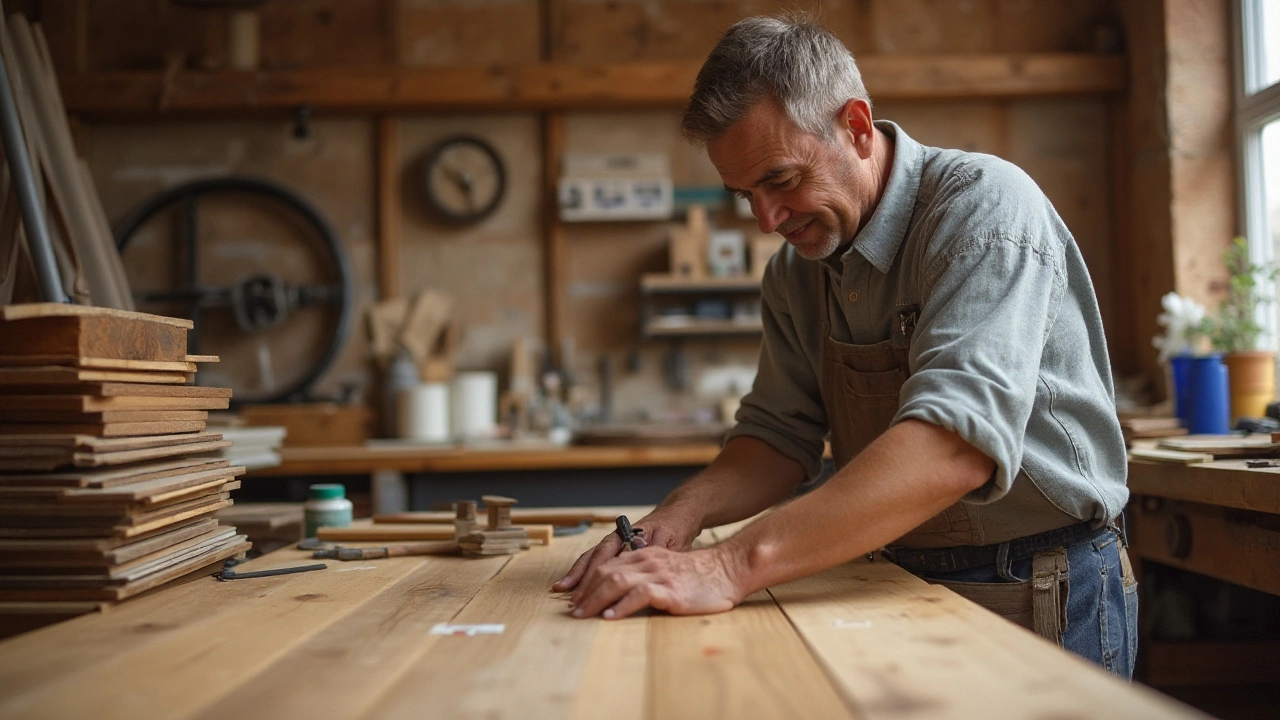
Lifestyle and Maintenance Considerations
When it comes to choosing flooring options that cater to your lifestyle, one must ponder more than just the initial aesthetic appeal. It's about the way your chosen floors will hold up under everyday life. For instance, if you have a bustling household with children or pets, selecting a flooring type that's durable—and can withstand a bit of chaos—is crucial. Kids, we're talking toys thrown about, or perhaps furry friends who deem your living room their playground. In such cases, vinyl flooring may be your best friend, as it's both tough and resilient. It imitates the look of pricier materials like wood or stone but without the same vulnerability to scratches or spills.
On the maintenance front, each material comes with its unique demands. Think about your typical day—do you fancy leisurely mornings or find love in tending to the upkeep of your living space? If cleaning doesn't make it to the top of your list, then carpets might be a bit too needy for your taste. Carpets can trap dust, allergens, and odors more easily than hard surfaces. Meanwhile, materials like laminate or vinyl require significantly less pampering. Simple sweeping or vacuuming does the trick, and they don't need refinishing to maintain their charm.
Consider this nugget from renowned interior designer Jonathan Adler:
"Your home is a reflection of how you live. Make sure your floors are in sync with your lifestyle."His perspective resonates well here—if you're all about low-stress environments, choose flooring that doesn't add more chores to your list.
Let's talk specifics with a little help from numbers. A study of household spending showed that on average, homeowners spend around 5% of their annual maintenance budget on flooring upkeep. If going low-maintenance means redistributing those funds more delightfully—wine subscriptions, anyone?—then your choice becomes clearer. Here's where cost-effective floors like laminate, engineered wood, or polished concrete shine. They provide the same visual appeal as their hardwood counterparts but without the stress and additional upkeep costs.
Finally, consider how the climate where you live plays into your flooring decision. Humidity levels, for instance, can wreak havoc on natural wood floors, causing them to expand and contract. This can lead to costly repairs or even replacements sooner than you'd prefer. For humid climates, engineered wood or tile might offer the right balance of beauty and functionality. Ultimately, your choice should blend your personal style, practicality, and a level of maintenance you're comfortable with, ensuring that your home remains both beautiful and livable.
Room-Specific Recommendations
Choosing the right flooring options for each room in your house is a lot like picking out the perfect attire for different social events; what works for the kitchen might not quite cut it in the living room. Each space has its unique demands in terms of functionality, aesthetics, and wear and tear, all of which you should consider before making your choice. Let's dive into which material stands out for various rooms, and why.
Living Rooms and Bedrooms
In living rooms and bedrooms, where warmth and comfort are often key, many homeowners gravitate towards hardwood or carpet. Hardwood offers a rich and timeless appeal that can withstand the bustling activity of a family’s daily life. However, carpets, on the flip side, provide a cozy underfoot feel that can be particularly inviting during colder months. According to a survey by Home Design Trends, nearly 60% of remodelers favor hardwood, citing its superior return on investment and durability. For those on a tighter budget, laminate flooring can mimic the look of hardwood without the hefty price tag, making it a cost-effective choice. These spaces are not as prone to moisture and heavy-duty spills, so you can focus more on aesthetics and comfort.
Kitchens and Bathrooms
Kitchens and bathrooms represent some of the most demanding environments in any home. Here, you're dealing with moisture, the occasional spill, and the need for easy cleaning, so your flooring choice should be both resilient and water-resistant. Ceramic tile often tops the list due to its durability and ease of maintenance. For an alternative, luxury vinyl tile is gaining popularity because it combines water resistance with ease of installation and a lower price point. In these spaces, practicality should be the main guide, though there’s no harm in choosing options with some visual flair like intricate tile patterns or textured finishes.
Basements and Utility Rooms
Basements and utility areas pose unique challenges due to potential moisture issues and less traffic. Concrete floors, though less glamorous, are highly functional, especially when sealed and treated against moisture. For a more refined look, consider vinyl flooring which can withstand damp conditions and bring a touch of style. According to an industry report by the National Association of Realtors, 70% of real estate professionals believe that quality basement flooring can enhance a home's value. The key here is to protect against moisture while keeping the setup simple and durable.
Richard Moran, a renowned interior designer, once said, "Floors endure the presence of every visitor, every family member, every moment spent in a room. Choose smart, choose lasting."
The choice of best flooring materials often depends on balancing your aesthetic desires with practical needs for each room’s specific circumstances. Explore each option with an eye for how you'll use the space, the comfort levels you desire, and the budget you're working with. By evaluating these factors, you can confidently decide which flooring will serve you and your home's unique personality.
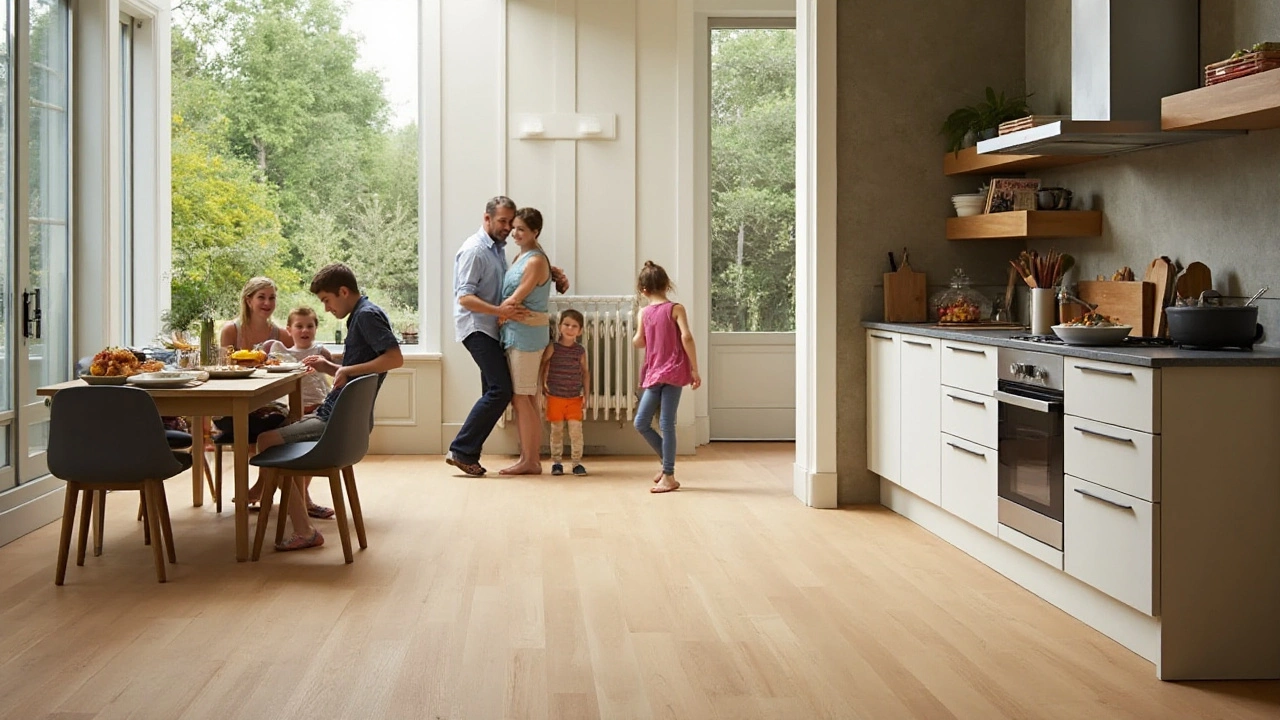
Tips for Maximizing Value
Getting the most out of your flooring investment is about more than just the cost of purchase. While the price tag is an important factor, considering how the material aligns with your lifestyle, maintenance routine, and household activity can make all the difference in the long run. A crucial step is doing your homework on the expected lifespan of each flooring option. Some materials like hardwood might initially sting your budget, but they repay you with decades of service if treated right.
Hardwood floors, for instance, benefit from regular sweeping and occasional refinishing, making them resilient to scratches and wear. Meanwhile, options such as vinyl require minimal upkeep but are sensitive to heavy drag of furniture. Embrace the practices that suit your household. A simple habit like banning shoes indoors can extend the life of your floors significantly, preventing dirt and grit from acting like sandpaper.
Consider Names You Can Trust
When looking to maximize value, it's wise to invest in brands with a strong reputation for quality and durability. These names often come with warranties that can provide peace of mind. As per Consumer Reports, flooring brands like Mohawk and Shaw consistently rank high in both quality and customer satisfaction. Their products often feature scratch-resistant and waterproof technologies, which can make a notable difference in high-traffic homes.
"You get what you pay for" holds especially true with flooring, asserts HomeAdvisor's Angi.com. The initial investment, balanced with quality can fend off replacement costs and repairs down the line.
DIY vs. Professional Installation
Another angle to consider is installation. While tackling a flooring project yourself might seem like a way to cut costs, some materials require professional expertise to avoid costly mistakes. Laminates and vinyl may be DIY-friendly; however, complex designs like intricate tile patterns or the sanding and sealing of hardwood are best left to professionals.
Regular Checks and Maintenance
Routine inspections to catch early signs of damage can play a big role in prolonging floor life. Watch for moisture issues, especially if your floors are in kitchens, bathrooms, or basements. Consider a dehumidifier in these spaces to keep conditions optimal for most flooring types. These approaches not only help in extending floor longevity, but they also keep your home environment healthy and safe.
| Flooring Type | Average Lifespan (years) |
|---|---|
| Hardwood | 25-100 |
| Laminate | 15-25 |
| Vinyl | 10-20 |
| Carpet | 5-15 |
Maximizing value from your floors is about understanding the unique characteristics and requirements of each material. It involves a savvy blend of selecting wisely, installing correctly, and maintaining regularly. With these tips, you'll stand a better chance of enjoying floors that look fresh and last long, with fewer headaches and more savings.

